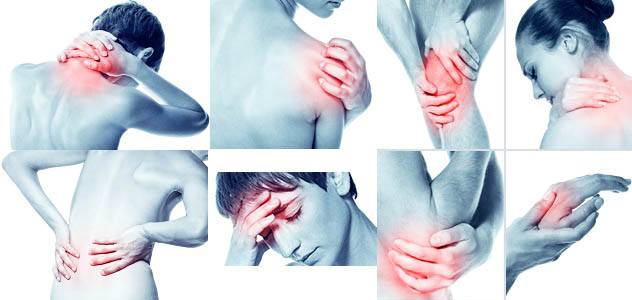
The term ''alternative therapy'' generally is used to describe any medical treatment or intervention that is used in place of conventional medicine. When alternative therapies are used in conjunction with conventional medicine, it is called complementary medicine. Alternative therapy encompasses a variety of disciplines, including acupuncture, guided imagery, chiropractic treatment, yoga, hypnosis, biofeedback, aromatherapy, relaxation, herbal remedies, massage, and many others.
In the past decade, strong evidence has been gathered for the benefits of mind-body therapies, acupuncture, and some nutritional supplements for treating pain. Other alternative therapies such as massage, chiropractic therapies, therapeutic touch, certain herbal therapies, and dietary approaches have the potential to alleviate pain in some cases. More research is needed to see how these therapies compare to conventional treatments.
Mind-Body Therapies
Mind-body therapies are treatments that are meant to help the mind’s ability to affect the functions and symptoms of the body. Mind-body therapies use various approach, including relaxation techniques, meditation, guided imagery, biofeedback, and hypnosis. Relaxation techniques can help alleviate discomfort related to chronic pain.
Acupuncture
Although the World Health Organization currently recognizes more than 30 diseases or conditions that can be helped by acupuncture treatment, one of the main uses of acupuncture is for pain relief.
Sixteenth Century Chinese doctors believed that illness was due to an imbalance of energy in the body. In acupuncture, disposable, stainless steel needles are used to stimulate the body's 14 major meridians, or energy-carrying channels, to resist or overcome illnesses and conditions by correcting these imbalances.
Acupuncture is also thought to decrease pain by increasing the release of chemicals that block pain, called endorphins. Many acu-points are near nerves. When stimulated, these nerves cause a dull ache or feeling of fullness in the muscle. The stimulated muscle sends a message to the central nervous system (the brain and spinal cord), causing the release of endorphins (morphine-like chemicals produced in our own bodies during times of pain or stress). Endorphins, along with other neurotransmitters (body chemicals that modify nerve impulses), block the message of pain from being delivered up to the brain.
Acupuncture may be useful as an accompanying treatment for many pain-related conditions, including headache, low back pain, menstrual cramps, carpal tunnel syndrome, tennis elbow, fibromyalgia, osteoarthritis, and myofascial pain. Acupuncture also may be an acceptable alternative to or may be included as part of a comprehensive pain management program.
Chiropractic Treatment and Massage
Chiropractic treatment is the most common non-surgical treatment for back pain. Improvements in people undergoing chiropractic manipulations were noted in some trials. Research also suggests that chiropractic treatments may be helpful for headaches, neck pain, certain arm and leg conditions, and whiplash. Serious complications such as stroke, pinched nerves and worsening of herniated discs have been rarely reported.
People suffering from pain, mostly to manage chronic back and neck problems, are increasingly using a message. Massage can reduce stress and relieve tension by enhancing blood flow. This treatment also can reduce the presence of substances that may generate and sustain pain. Available data suggest that massage therapy, like chiropractic manipulations, holds considerable promise for managing back pain.
Therapeutic Touch and Reiki Healing
Therapeutic touch and reiki healing are thought to help activate the self-healing processes of an individual and therefore reduce pain. Although these so-called "energy-based" techniques do not require actual physical contact, they do involve close physical proximity between practitioner and patient.
In the past few years, several reviews evaluated published studies on the efficacy of these healing approaches to ease pain and anxiety and improve health. Although a few small studies showed these techniques are beneficial and have no significant adverse side effects, the limitations of some of these studies make it difficult to draw definitive conclusions. Further studies are needed before the evidence-based recommendation for using these approaches for pain treatment can be made.
Dietary Approaches to Treating Pain
Some people believe that changing dietary fat intake and/or consuming plant foods that contain anti-inflammatory agents can help ease the pain by limiting inflammation.
A mostly raw vegetarian diet was found helpful for some people with fibromyalgia, but this study was not randomized and was without a control group. One study of women with premenstrual symptoms suggested that a low-fat vegetarian diet was associated with decreased pain intensity and duration. Weight loss achieved by a combination of dietary changes and increased physical activity has been shown to be helpful for people suffering from osteoarthritis.
Still, further research is needed to determine the effectiveness of dietary modifications as a pain treatment.
Nutritional Supplements
There is some evidence indicating that glucosamine sulfate and chondroitin sulfate may be marginally effective for knee osteoarthritis, but other studies have found no benefit at all. These natural compounds were found to be well tolerated and safe.
Other dietary supplements, such as fish oils, also showed some early evidence of benefit, although more research is needed.
Herbal Remedies
It has been difficult to draw conclusions about the effectiveness of herbs. If you decide to use herbal preparations to better manage your pain, it is of critical importance to share this information with your doctor. Some herbs may interact with drugs you are receiving for pain or other conditions and may harm your health.
Things to Consider
Alternative therapies are not always benign. As mentioned, some herbal therapies can interact with other medications you may be taking. Always talk to your doctor before trying an alternative approach and be sure to tell all your doctors what alternative treatments you are using.
Precision Pain Care and Rehabilitation has two convenient locations in the Richmond Hill – Queens and New Hyde Park – Long Island. Call the Richmond Hill office at (718) 215-1888, or (516) 419-4480 for Long Island office, to arrange an appointment with our Interventional Pain Management Specialist, Dr. Jeffrey Chacko.













